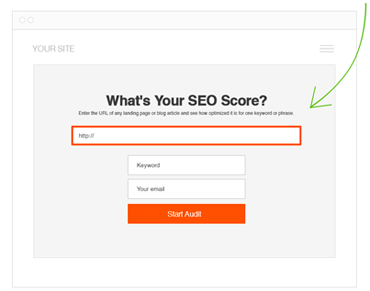Content Selection: Choosing Blog Topics that Drive Traffic

In the ever-evolving world of digital marketing, the content you create is pivotal in driving traffic to your website. But with millions of blogs published daily, how do you ensure your content stands out and attracts the right audience? The key lies in mastering the art of content selection—choosing blog topics that resonate with your audience and align with your SEO goals.
In this blog, we’ll explore why selecting the right blog topics is crucial for your digital strategy and provide actionable tips on using keyword research tools to choose topics that drive traffic.
Why Content Selection Matters
1. Aligning with Audience Interests
Your content should speak directly to your target audience’s needs, pain points, and interests. If your blog topics fail to resonate with them, you risk losing engagement, leading to decreased traffic, lower conversion rates, and, ultimately, a decline in your online presence.
You position yourself as a valuable resource by selecting topics that address the specific questions and challenges your audience faces. This builds trust and encourages repeat visits, increasing the likelihood of conversions over time.
2. Meeting SEO Goals
SEO is more than just sprinkling keywords throughout your content; it provides value while ensuring your content is discoverable. Choosing the right blog topics is a crucial part of this equation. The right topic can attract organic traffic, improve your search engine rankings, and enhance your visibility online.
When your blog topics are strategically selected to align with SEO goals, such as targeting high-volume keywords or addressing trending topics, you increase your chances of ranking higher on search engine results pages (SERPs). This, in turn, drives more traffic to your site.
How to Choose Blog Topics that Drive Traffic
Now that we understand the importance of content selection, let’s explore the process of choosing blog topics that align with audience interests and SEO goals. Here are some practical steps to help you get started.
1. Understand Your Audience
Before you even think about SEO, it’s essential to have a deep understanding of your audience. Who are they? What challenges do they face? What are their interests and preferences? Understanding your audience’s demographics, behaviors, and pain points will guide your content creation process.
Actionable Tip:
Create audience personas to visualize your target readers. Include age, profession, goals, challenges, and preferred content formats. Use these personas to brainstorm topics that would resonate with them.
2. Leverage Keyword Research Tools
Keyword research is the cornerstone of SEO and plays a critical role in content selection. By identifying keywords and phrases your audience is searching for, you can create content that directly answers their queries, increasing the likelihood of your blog being found.
Actionable Tips:
Use Google Keyword Planner. This tool lets you discover keywords related to your industry, see their search volumes, and assess their competition levels. For the best results, choose keywords that balance high search volume and low competition.
Try Ubersuggest or Ahrefs: These tools provide a wealth of information, including keyword suggestions, search volume, and SEO difficulty. Use them to find long-tail keywords—specific phrases with lower competition that can drive targeted traffic to your site.
Explore Google Trends: This tool helps you identify trending topics by showing the popularity of specific search terms over time. It helps discover seasonal or emerging topics that could give your content a timely boost.
3. Analyze Competitor Content
Looking at your competitors’ activities can provide valuable insights into which topics are working well in your industry. By analyzing their top-performing content, you can identify gaps in their strategy or find inspiration for your blog topics.
Actionable Tip:
Use Tools Like SEMrush or BuzzSumo: These platforms allow you to analyze competitor content and see which topics drive the most traffic and engagement. Look for gaps where you can provide a unique perspective or cover a topic in greater depth.
4. Consider Search Intent
Understanding the intent behind a search query is crucial for choosing blog topics that will attract the right audience. Search intent can generally be categorized into informational (seeking knowledge), navigational (looking for a specific site), transactional (ready to make a purchase), or commercial investigation (researching products/services).
Actionable Tips:
Align Topics with Informational Intent: Focusing on informational intent can be highly effective if your goal is to drive traffic. Create how-to guides, tutorials, or educational content that answers common questions in your niche.
Use Google’s “People Also Ask” Feature: This feature provides insights into related questions that people are asking, which can help you understand the broader context of your topic and refine your content to meet search intent.
5. Balance Evergreen and Trending Topics
To maintain a steady traffic flow, it’s vital to balance evergreen content—topics that remain relevant over time—with trending topics that capitalize on current events or emerging trends.
Actionable Tips:
Plan Evergreen Content: These are the foundational topics in your industry that consistently drive traffic. Examples might include guides, tips, or best practices.
Monitor Industry News for Trending Topics: Set up alerts for industry news or use tools like Feedly to stay updated on emerging trends. Writing timely content on these topics can help you capture spikes in search traffic.
6. Test and Refine Your Content Strategy
Content selection is not a one-time task; it requires continuous testing and refinement. Track the performance of your blog posts using analytics tools, and be prepared to adjust your strategy based on what’s working (and what’s not).
Actionable Tips:
Use Google Analytics: Track metrics such as page views, time on page, and bounce rate to gauge the success of your blog topics. High engagement on specific topics can indicate strong audience interest.
A/B Test Blog Topics: Try publishing different types of content (e.g., listicles vs. deep-dive guides) to see what resonates more with your audience. Use this data to refine your content strategy moving forward.
Conclusion
The art of content selection involves understanding your audience, leveraging data, and aligning with SEO goals. By carefully choosing blog topics that resonate with your target audience and meet their needs, you can drive significant traffic to your site and build a loyal readership.
Remember, successful content selection is an ongoing process. Monitor performance continuously, stay attuned to your audience’s evolving interests, and adapt your strategy as needed. With these practices in place, you’ll be well on your way to creating content that ranks well and drives meaningful engagement and results.
 August 9, 2024
August 9, 2024


